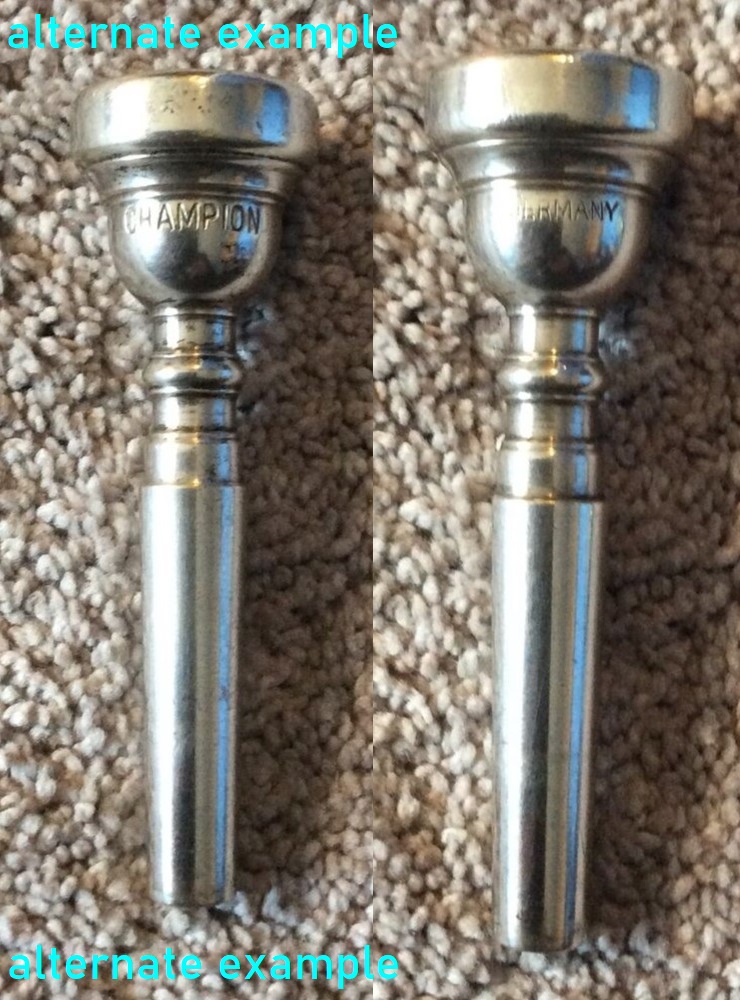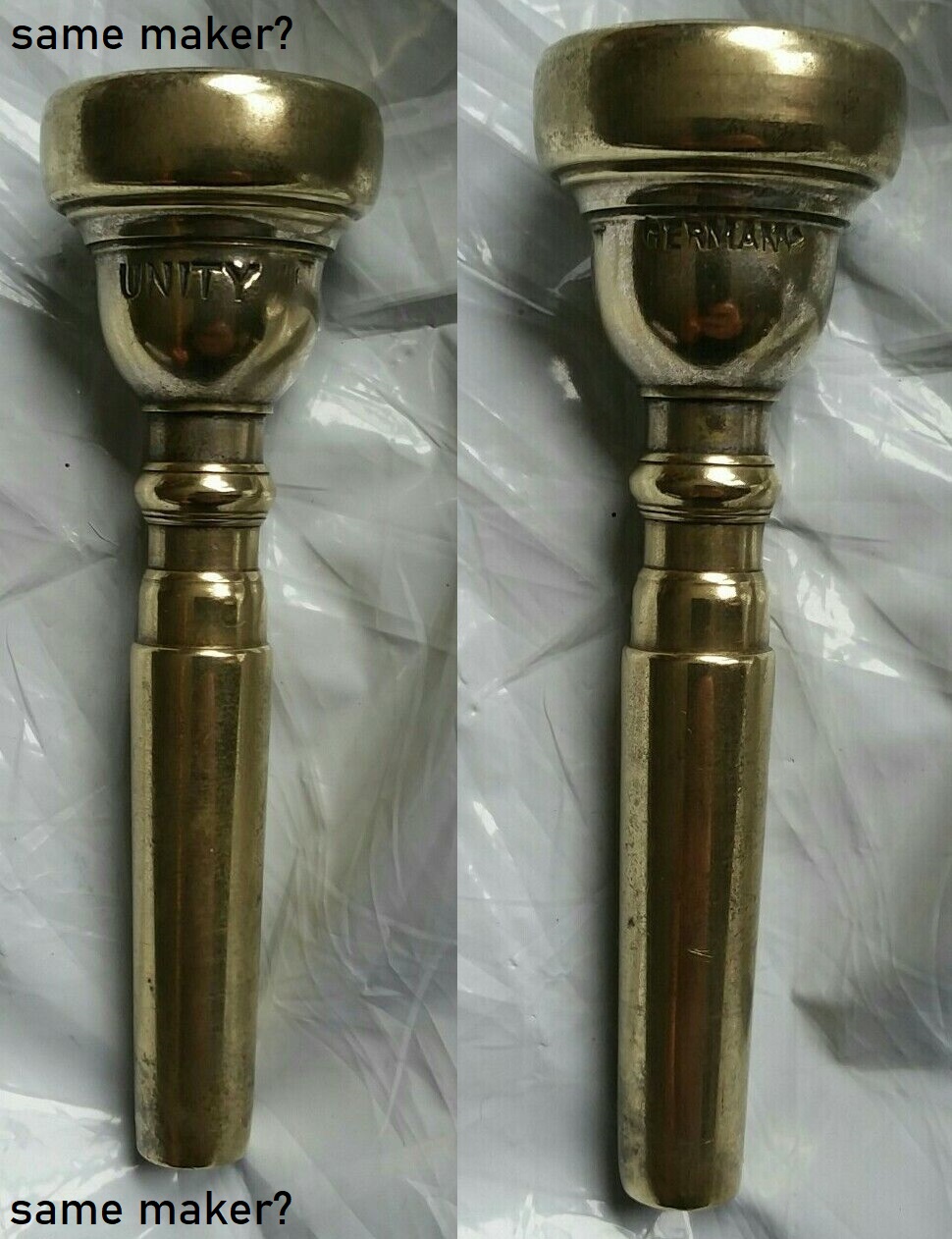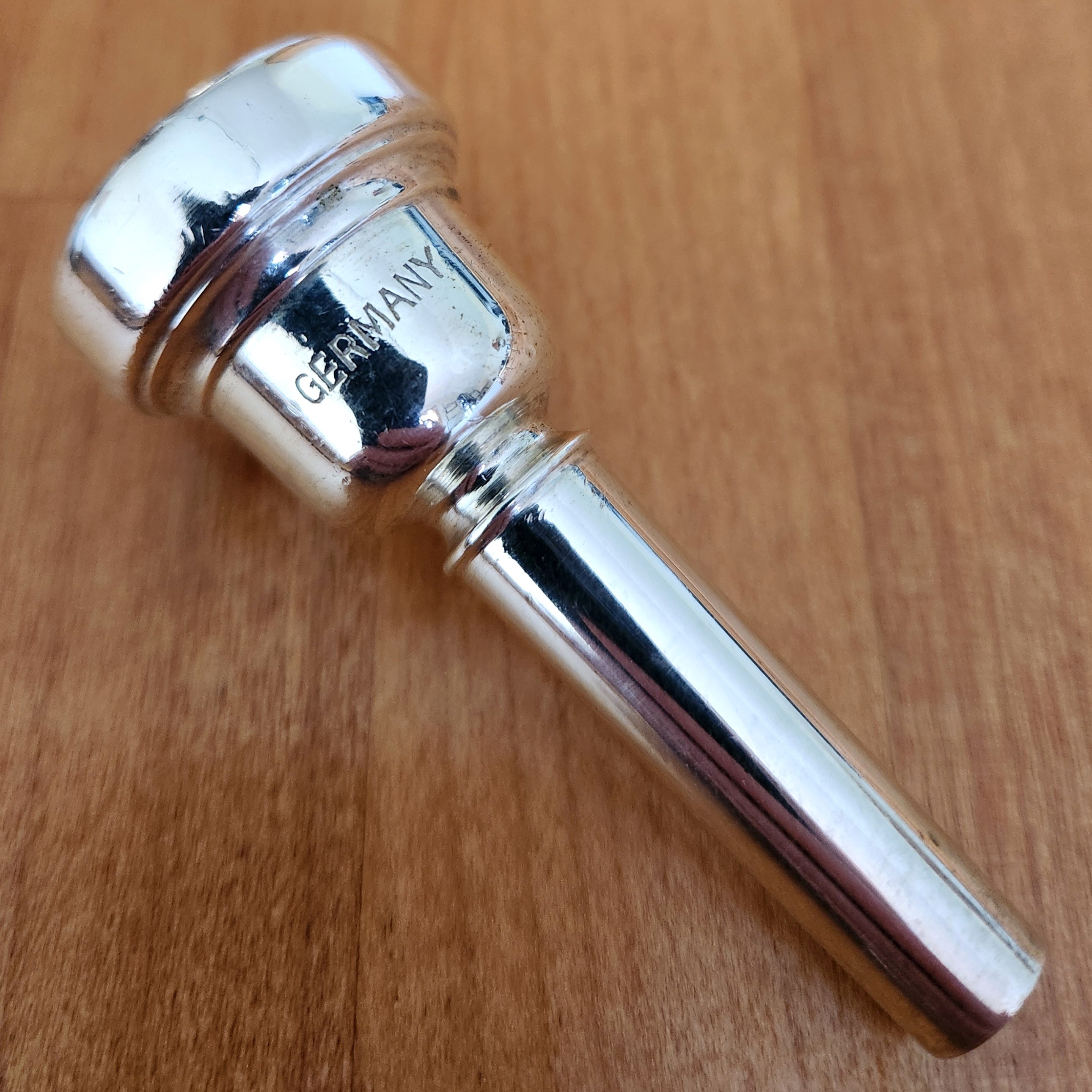|
Last updated: January 8, 2025
"Champion" double cup trumpet mouthpiece, made in Germany ca. 1950s (LINK)
Another post-war stencil from Germany, bearing a strong resemblance to others in the same vein.
The double-cup concept was intended for players to angle the mouthpiece so the airstream focused on different sections to achieve different effects. The shallow "upper" cup was for brighter sound and high register support, and the deeper "lower" cup was intended to give the player the option of darker sound when desired. Harry James was one of Parduba's biggest advertising assets, and his influence may have sparked the double-cup craze that resulted in numerous European manufacturers making their own designs. James played Selmer and King trumpets, and I've seen Hablowetz, Tilz, Amati-Kraslice, Selmer, and unbranded European double-cup pieces made in that vein. The "H 2 J" model designation on Hablowetz pieces may be a reference to James as well.
This "Champion" piece appears to have narrower segments than the Parduba 5 and 5-1/2 series, such as the secondary cup and the throat profile. The tone is a bit nasally for my taste, though in the right hands, it can be very effective in the high register! It's certainly more comfortable than the flat rim, sharp-bite A&S/Arnold Stölzel & Sons "DK" double-cup piece. This particular item has signs of heavy buffing and replating. I have a raw brass version as well, and have seen silver-plated ones with sharper details, but this seems to have been silver plated [again?] at some later point.
While "Champion" isn't a particularly unique brand name, the Barnes & Mullins/B&M firm in England applied it to their brasswind line, and still do today. B&M Champion trumpets were one of several common student horns in the 1970s. Other similar pieces appear under the Champion name as well as "Unity", itself a tradename on other brasswind mouthpieces.
The Bach-influenced exterior along with the English-language brand names make me think these were mass-produced stencils for export.
Who exactly made it in what part of Germany isn't clear; the "Germany" stamp reminds me of that on parts & components from various GDR shops that became B&S/Weltklang, though I can't be 100% sure, but the "Germany" stamp still gives us an idea when this was made - probably prior to 1974.
Early post-war German goods were marked with the zone of occupation; Germany was still a country under Allied administration. This is why you see musical instruments and other goods marked "US Zone Germany" or "Germany, USSR-occupied". The former is seen on late 1940s Böhm-Meinl stencils like "Revere", and the latter on instruments from the Vogtland in Saxony, from shops that eventually produced B&S and Weltklang.
After the two German states were established in 1949, both states laid claim to the entirety of Germany, with the other half being either the "Soviet Zone" or "Western Zone" and considered illegitimate. The West/FRG made this official as the Hallstein Doctrine for representation abroad, though the East/GDR eventually softened their analogous version.
Some cross-border trade occurred, and many early Böhm-Meinl instruments have valves or parts identical to Markneukirchen-made stencils, including the "Made in Germany" stamp on the mouthpiece receiver identical to some 1940s Amatis also made in Markneukirchen. As it turns out, Max Keilwerth was retained as a go-between to outsource production, so Amati could fill early quotas by stenciling German instruments (Amati returned the favor by providing valve blocks to B&S at times in the 1970s and 1980s).
Eastern German parts and compatible designs appear for years afterward, as many of the Bavarian-based instrument makers had ties to instrument makers in the East.
Goods produced in both states often continued to be marked "Made in Germany" irrespective of what government was in charge of that territory - technically, it was true.
Western chancellor Willy Brandt and Ostpolitik ended this policy, and in 1973, the West/Federal German court ruled that the FRG couldn't lay claim to "Made in Germany" exclusively, meaning East Germany also shouldn't use it to hide the true origin of their products, reinforcing the reason to distinguish between West and East.
 |
 |
 |
| Brand stamp |
Cup view |
"Germany" stamp |
| Other products only marked "Germany", regardless of which state |
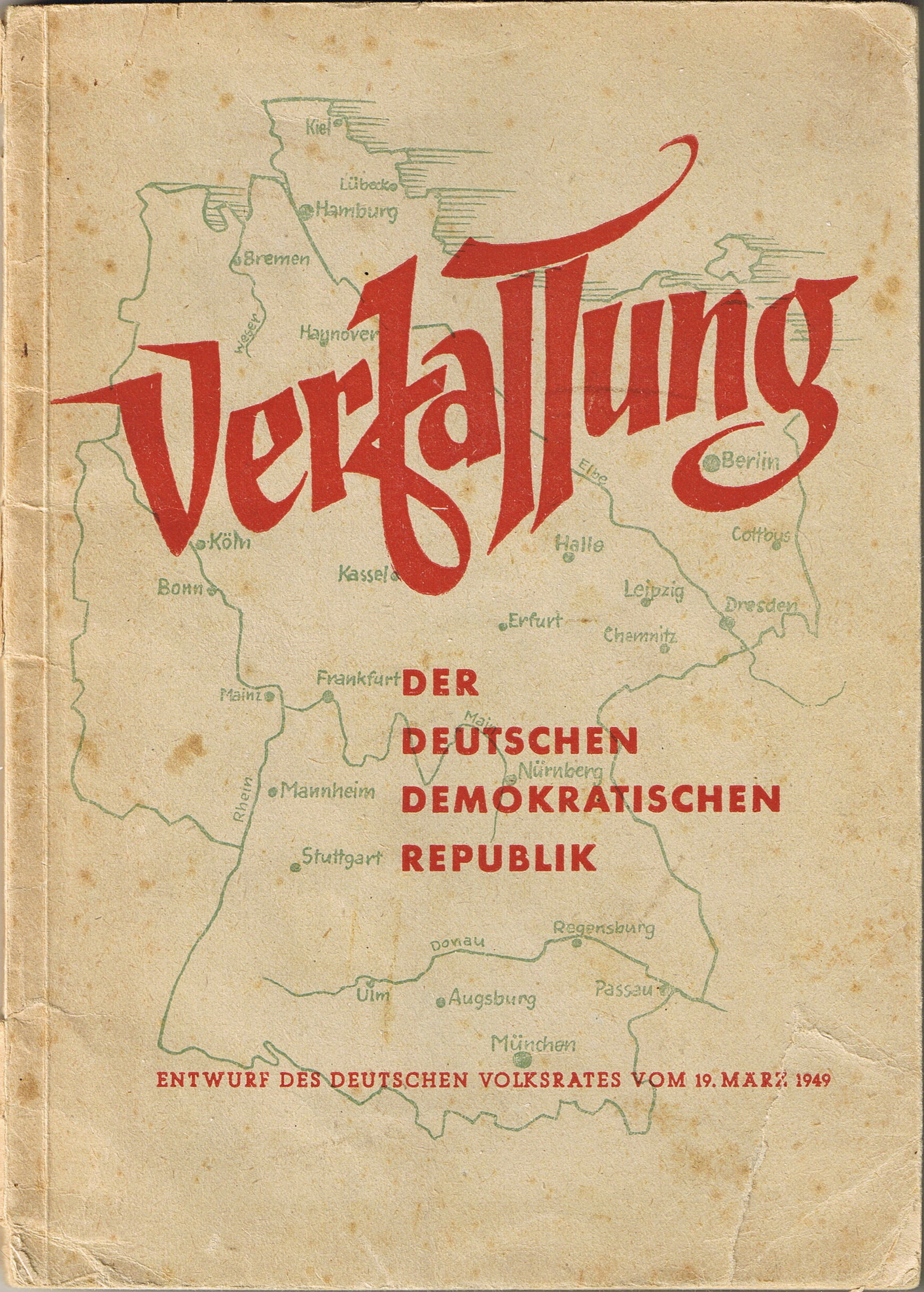 |
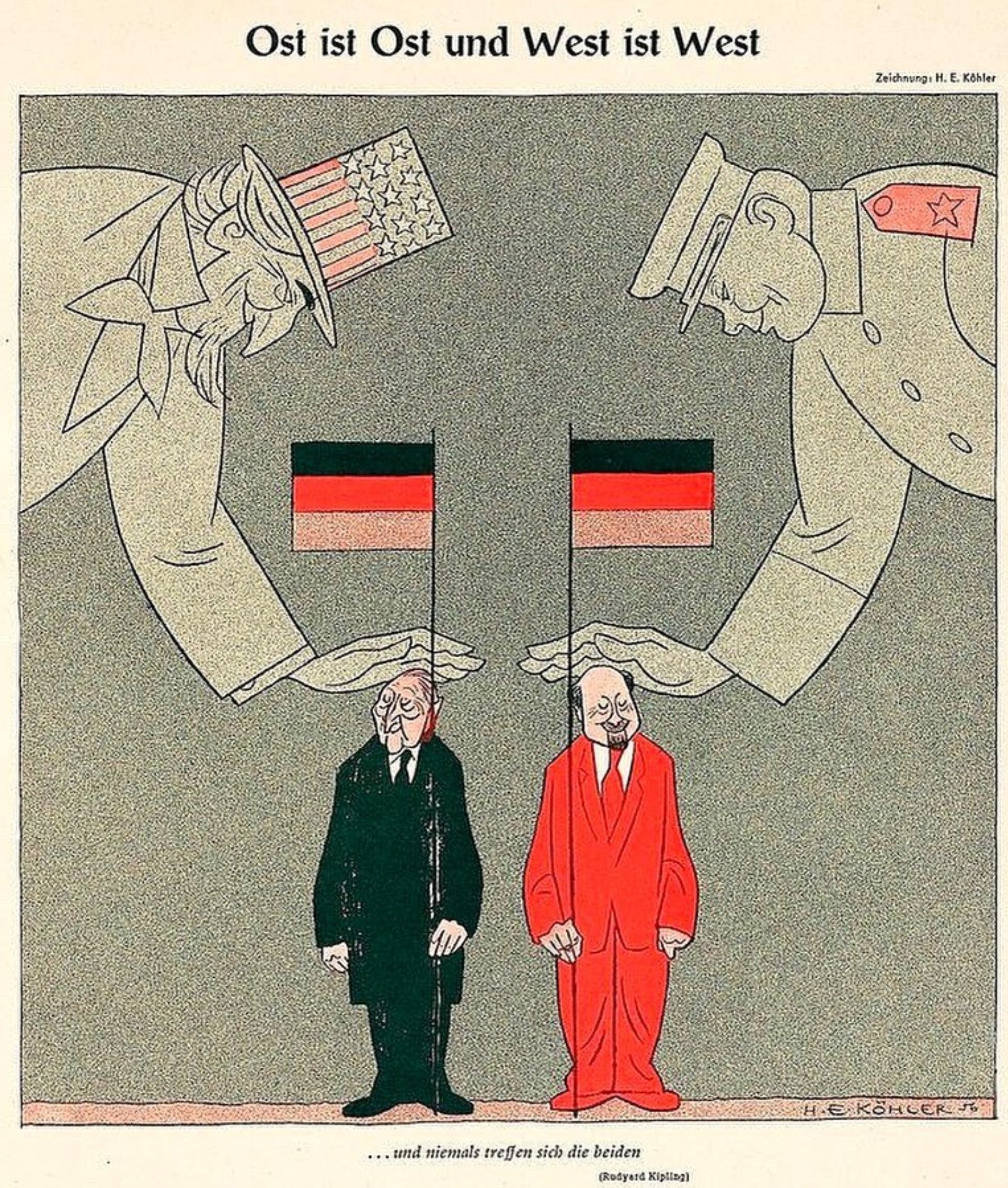 |
| The GDR (East) constitution initially was presented as an all-German document; the idea of Germany being one country under occupation wasn't unique, and both states used the same tricolor until 1959 |
Of course Germany is one country; the "other" one is a zone occupied by foreign powers |
(back to top)
|




